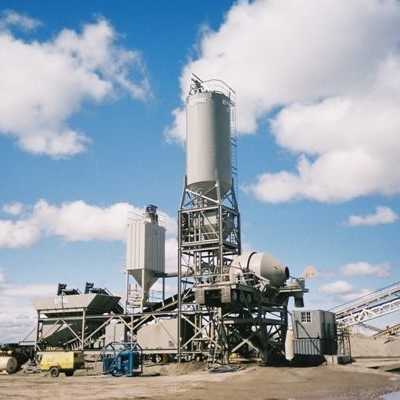Posted on October 28, 2021
What constitutes three-fourths of all the known matter in the universe? Hydrogen! It is abundant on the earth’s surface as well. Hydrogen and oxygen atoms combine to form the water that covers 71% of the Earth’s surface.

The "Colors" of Hydrogen
The colors of hydrogen reference varying production methods. Green, gray and brown hydrogen are examples. Blue hydrogen is gray or brown hydrogen linked with carbon capture tech. Green hydrogen production requires fully renewable energy sources. Solar, wind, hydro and geothermal are common examples.
The U.S. Energy Information Administration (EIA) provides additional detail about hydrogen production.
Gray and brown hydrogen production
At present, more than 98% of hydrogen is either gray or brown. Unfortunately, emissions related to gray hydrogen production are high. The Columbia Climate School estimates CO2 emissions total 830 million metric tons per year. This is an amount equal to the total emissions of Indonesia and the United Kingdom combined.
Commercial gray hydrogen production often relies on a process known as steam-methane reforming. High temperature steam (1300-1800°F) gets pressurized (anywhere from about 15 to 370 PSI). It reacts with methane to produce three gases. They are hydrogen, carbon monoxide and carbon dioxide. Common methane sources include natural gas, coal and landfill biogas.
Hydrogen Shot Initiative
In June, 2021, the U.S. Department of Energy (DOE) announced “Hydrogen Shot.” It is the first in a series of DOE “Energy Earthshots” initiatives. The stated goal is to reduce the cost of clean hydrogen 80% to $1 per kilogram in one decade.
Consider a graph published by the International Renewable Energy (IRENA). It details ways to make green hydrogen cost-competitive. First, reduce electrolyzer cost by 80%. Second, double their typical service life from 10 to 20 years. Third, scale production. Download IRENA’s full report on scaling electrolyzers here.
Clean, green hydrogen may have the most impact when powering high-heat industrial processes. Clinker production in cement kilns is a prime example. The process requires temperatures of about 1300-1450º C. At present, fossil fuels generate most of the heat for America’s kilns.
When it comes to limiting the emissions related to clinker production, zero-carbon fuel is only part of the answer. It is also vital to capture the carbon dioxide released during the process.
Sourcing Green Hydrogen
The DOE notes that there are multiple hydrogen production processes. They are: electrolytic, thermochemical (including steam methane reforming), direct solar and biological. Some are not green, while others remain unproven technologies.
Electrolytic processes
Electrolyzers use electricity to split water into hydrogen and oxygen. They are like fuel cells in that they feature an anode and a cathode separated by an electrolyte. Electrolyzers range in size from appliance-sized units to massive production facilities. There are several types:
Polymer electrolyte membrane
Alkaline
Solid oxide
Electrolysis produces a kilogram of hydrogen from eight gallons of deionized water. When renewable energy fuels an electrolyzer, it produces carbon-free, “green” hydrogen. Energy consumption currently stands at 62 KWh per kilogram of green hydrogen.
Biomass gasification
At high temperatures, waste breaks down to basic atomic and molecular compounds, including hydrogen. SGH2 is a company using plasma torch technology originally developed to test NASA heat shields. It says its proprietary process produces green hydrogen at lower cost than electrolysis. Lawrie Evans of LafargeHolcim, says it can be "a cost competitive solution to provide the high quality heat required in our industry.”
Proposals for Green Hydrogen Production
There are many proposals for green hydrogen projects around the world. Here are a few examples.
Europe
At a German cement plant, there are plans to capture CO2 and convert it to synfuel, plastics and other chemicals. A 30 MW electrolyzer will generate green hydrogen using electricity from an offshore wind form.
Siemens’ all-in-one wind turbine is evidence of a growing commitment to green hydrogen. Siemens will combine its largest offshore wind turbine with a built-in electrolysis unit. It expects the fully integrated wind-to-hydrogen system to be operative within five years.
Volvo and Swedish steel producer SSAB AB are partners in another green hydrogen project. They expect to use it to produce zero-carbon steel. Commercial-scale production is set for 2026.
Middle East
Neom is a Saudi city developers will build from scratch. A half-trillion-dollar investment will ultimately result in a city housing more than a million people. Neom’s designers are betting big on green hydrogen. American company Air Products & Chemicals is four years into building Neom’s green hydrogen plant. Solar and wind projects will deliver 4 GW of power to the facility.
Asia
In June, 2021, Swedish-German renewables firm Svevind announced a 45 GW wind/solar project. The steppes of central and western Kazakhstan will be the site for the gigantic project. Two-thirds of the electricity would power 3 million tons of green hydrogen production.
Fukushima Hydrogen Energy Research Field is a 10 MW green hydrogen facility in Japan. Hourly capacity is 1,200 normal meter cubed (Nm3) of hydrogen. In India, Reliance Industries plans to construct a gigafactory for green hydrogen production.
Green Hydrogen: Challenges
Green hydrogen still presents many challenges. Since electrolysis is energy-intensive, electricity costs are a key factor. Also, hydrogen is an explosive gas. It exploits even the smallest leaks when stored or transported. Storage requires 700-atmosphere compression and cooling to minus 253° C.
Transportation is another obstacle. On-site production is ideal. Transportation requires liquefaction, significant compression and/or pipelines which do not exist at present. Significant cooling and compression is complex, particularly at scale.
Praxair, Air Products and Air Liquide are three companies operating U.S. hydrogen liquefaction plants. The current U.S. capacity of 240 tons/day has not appreciably increased for 20 years.
About PACA
SpecifyConcrete.org is a website maintained by the Pennsylvania Aggregates and Concrete Association (PACA). For more information, about concrete and sustainability, please contact us.
